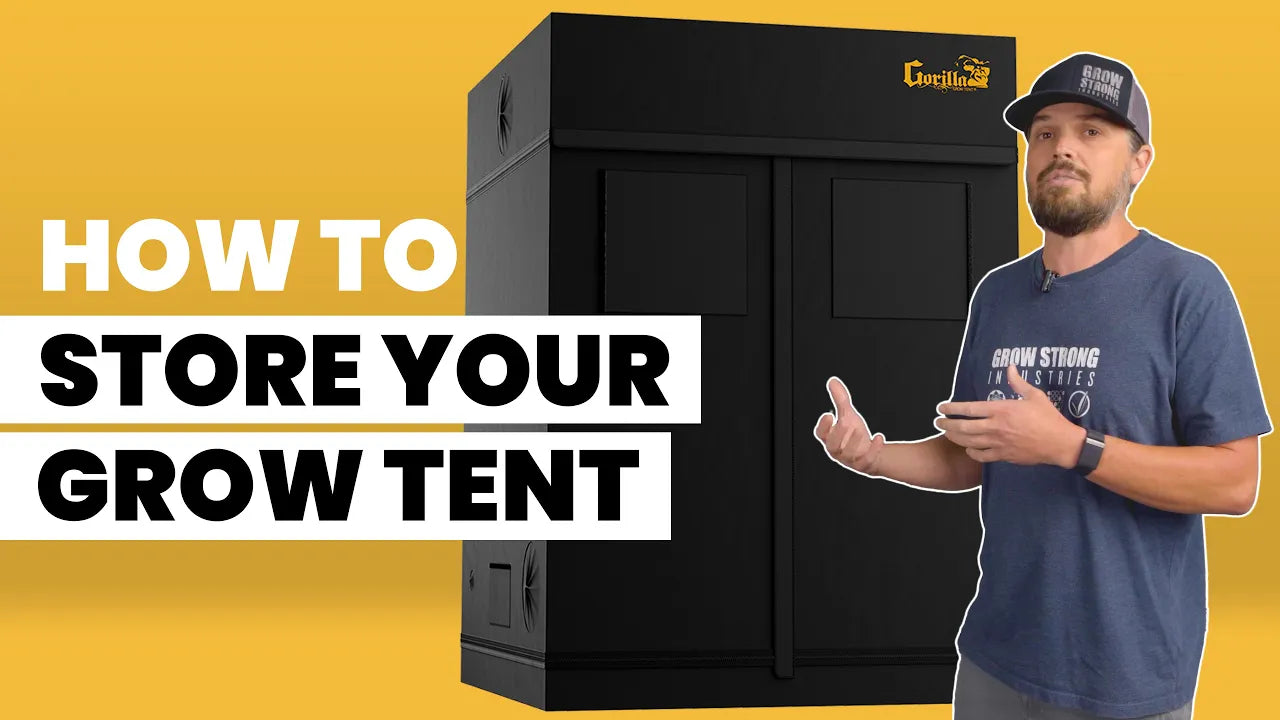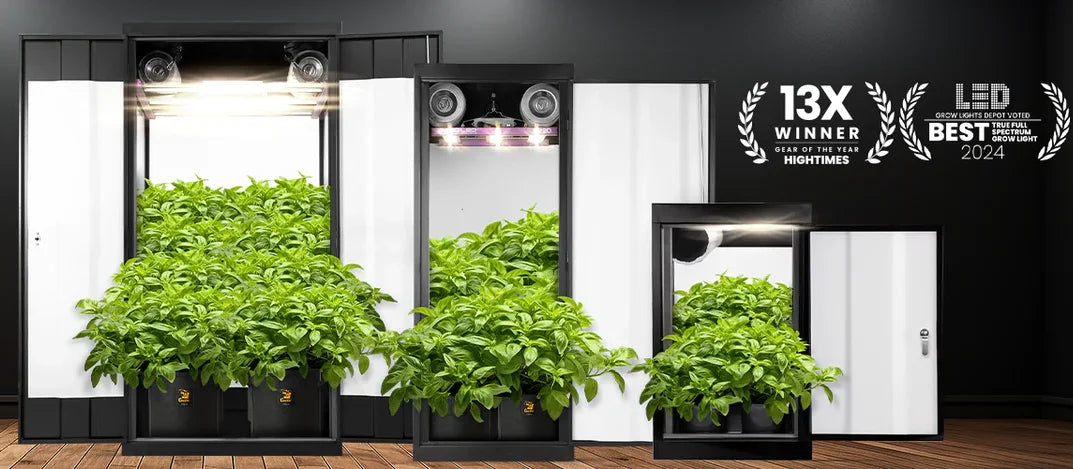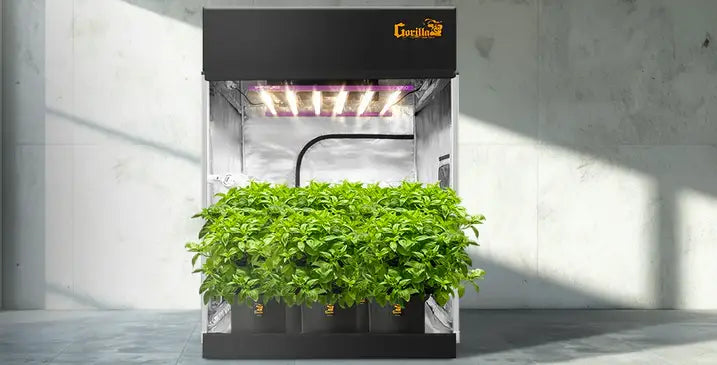
How to Set Up a Grow Room with Gorilla Grow Tent
How to Set Up a Grow Room: A Step-by-Step Guide
Introduction to Setting Up a Grow Room
Creating a grow room is the perfect way to cultivate plants indoors with complete control over their environment. Whether you're growing cannabis, vegetables, or other plants, setting up a proper grow room ensures your plants receive the right amount of light, water, and nutrients. At Gorilla Grow Tent, we specialize in durable, high-quality grow tents that make it easier than ever to create the ideal growing space. This guide will walk you through the steps to set up your grow room for success.
1. Choose the Right Space for Your Grow Room
The first step in setting up a grow room is selecting a suitable space. It could be a spare room, closet, basement, or garage. The space you choose will depend on the number of plants you want to grow and the equipment you'll need.
- Size: Ensure the space has enough room for your grow tent, plants, and equipment. Measure the space to make sure everything fits comfortably.
- Access to Power: Your grow room needs access to power for lighting, fans, and other equipment. Make sure there are enough outlets nearby.
- Ventilation: Proper ventilation is crucial for maintaining temperature and humidity levels. Ensure your space allows for proper airflow and the ability to install exhaust fans.
2. Choose Your Grow Tent
Using a grow tent simplifies the process of creating a controlled environment. Gorilla Grow Tent offers a wide range of grow tents in various sizes, making it easy to find the perfect fit for your grow room. Here's why a grow tent is essential:
- Light Control: A grow tent ensures that your plants receive the right amount of light by reflecting light inside and keeping unwanted light out.
- Temperature and Humidity Control: Grow tents help maintain stable temperature and humidity levels, which are critical for healthy plant growth.
- Pest Prevention: By enclosing your plants, a grow tent reduces the risk of pests and diseases that can damage your crop.
3. Set Up Grow Lights
Lighting is one of the most important factors in a grow room. Plants need light for photosynthesis, and the right grow lights will mimic natural sunlight. Here are the most common types of grow lights for your setup:
- LED Grow Lights: Energy-efficient and full-spectrum, LED lights are ideal for all stages of plant growth. They produce less heat and save energy, making them a popular choice for indoor growers.
- HID (High-Intensity Discharge) Lights: HID lights, such as Metal Halide (MH) and High-Pressure Sodium (HPS), are powerful and effective for growing plants. However, they produce more heat and require proper ventilation.
- Fluorescent Lights: These are a more affordable option for smaller grows. They work well for seedlings and early vegetative growth but are less intense than LED or HID lights.
4. Ventilation and Airflow
Proper airflow is crucial for plant health and temperature control in your grow room. Without adequate ventilation, heat and humidity levels can rise, leading to mold, pests, and poor plant growth. Here's what you'll need:
- Inline Fan: An inline fan removes hot air from the grow room and brings in fresh air. It's essential for regulating temperature and humidity.
- Carbon Filter: If you're growing plants with strong odors, such as cannabis, a carbon filter will help neutralize the smell before it's vented outside.
- Oscillating Fan: Place an oscillating fan inside the grow tent to circulate air and prevent hot spots from forming near the lights.
5. Choose Your Growing Medium
The growing medium is where your plants’ roots will develop. Whether you choose soil, coco coir, or a hydroponic system depends on your preferences and experience level. Here are the most popular options:
- Soil: Organic potting soil is beginner-friendly and contains natural nutrients. It's easy to use and provides a buffer against nutrient imbalances.
- Coco Coir: A soilless medium made from coconut husks, coco coir retains moisture while providing good aeration for roots. It’s ideal for hydroponic systems.
- Hydroponics: Growing plants in water-based nutrient solutions (without soil) allows for faster growth and higher yields. Hydroponics requires more equipment and monitoring but offers great results for experienced growers.
6. Watering and Nutrient Management
Plants need consistent watering and the right nutrients to thrive in a grow room. Overwatering or underwatering can harm your plants, so it's essential to monitor moisture levels. Here’s what you need to know:
- Watering: Water your plants when the top inch of soil feels dry. Use pots with drainage holes to prevent water from pooling at the bottom, which can cause root rot.
- Nutrients: During the vegetative stage, plants need a nutrient solution rich in nitrogen. As they move into the flowering stage, switch to nutrients higher in phosphorus and potassium to support bud development.
- pH Levels: Keep the pH of your water and nutrient solution between 6.0-6.5 for soil grows and 5.5-6.0 for soilless mediums to prevent nutrient lockout.
7. Temperature and Humidity Control
Maintaining the right temperature and humidity levels is critical for plant health in a grow room. Use a thermometer and hygrometer to monitor these conditions and make adjustments as needed:
- Temperature: During the vegetative stage, keep the temperature between 70-85°F (21-29°C). In the flowering stage, aim for 65-80°F (18-26°C).
- Humidity: Seedlings and young plants thrive in higher humidity levels (60-70%), while mature plants prefer lower humidity (40-50%) to prevent mold and mildew.
- Ventilation: Use exhaust fans and dehumidifiers if needed to maintain optimal temperature and humidity levels in your grow room.
8. Monitoring and Maintenance
Once your grow room is set up, regular monitoring and maintenance will help ensure a successful harvest. Here are a few tips:
- Check for Pests: Inspect your plants regularly for pests like spider mites, aphids, or fungus gnats. Catching infestations early can prevent damage to your crop.
- Prune and Train Plants: Pruning your plants encourages better airflow and light penetration. Training techniques like low-stress training (LST) can also help maximize yields.
- Adjust Light and Water: As your plants grow, adjust the height of your grow lights and monitor water levels to ensure they receive the proper amount of light and hydration.
Conclusion: Setting Up Your Grow Room with Gorilla Grow Tent
Setting up a grow room can seem overwhelming, but with the right tools and guidance, it’s easier than you think. Gorilla Grow Tent provides high-quality grow tents and accessories that make the process simple and efficient. By following the steps in this guide, you’ll have a fully functional grow room that maximizes plant health and yield. From selecting the right space and equipment to monitoring environmental conditions, you’ll be well on your way to a successful indoor grow.
Frequently Asked Questions
- How big should my grow room be? The size of your grow room depends on how many plants you want to grow and the equipment you’ll need. A 4x4 grow tent is ideal for beginners growing 4-6 plants.
- Do I need a carbon filter for my grow room? If you’re growing plants with strong odors, such as cannabis, a carbon filter will help neutralize the smell before it's vented outside the grow room.
- What is the best temperature for a grow room? Keep the temperature between 70-85°F (21-29°C) during the vegetative stage, and lower it slightly to 65-80°F (18-26°C) during flowering.


